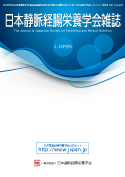Volume 31, Issue 6
Displaying 1-20 of 20 articles from this issue
- |<
- <
- 1
- >
- >|
-
2016 Volume 31 Issue 6 Pages 1215-1220
Published: 2016
Released on J-STAGE: December 20, 2016
Download PDF (507K) -
2016 Volume 31 Issue 6 Pages 1221-1224
Published: 2016
Released on J-STAGE: December 20, 2016
Download PDF (378K) -
2016 Volume 31 Issue 6 Pages 1225-1228
Published: 2016
Released on J-STAGE: December 20, 2016
Download PDF (495K) -
2016 Volume 31 Issue 6 Pages 1229-1233
Published: 2016
Released on J-STAGE: December 20, 2016
Download PDF (399K) -
2016 Volume 31 Issue 6 Pages 1234-1238
Published: 2016
Released on J-STAGE: December 20, 2016
Download PDF (590K) -
2016 Volume 31 Issue 6 Pages 1239-1242
Published: 2016
Released on J-STAGE: December 20, 2016
Download PDF (419K)
-
2016 Volume 31 Issue 6 Pages 1243-1248
Published: 2016
Released on J-STAGE: December 20, 2016
Download PDF (488K) -
2016 Volume 31 Issue 6 Pages 1249-1255
Published: 2016
Released on J-STAGE: December 20, 2016
Download PDF (566K) -
2016 Volume 31 Issue 6 Pages 1256-1262
Published: 2016
Released on J-STAGE: December 20, 2016
Download PDF (465K)
-
2016 Volume 31 Issue 6 Pages 1263-1269
Published: 2016
Released on J-STAGE: December 20, 2016
Download PDF (564K) -
2016 Volume 31 Issue 6 Pages 1270-1273
Published: 2016
Released on J-STAGE: December 20, 2016
Download PDF (446K)
-
2016 Volume 31 Issue 6 Pages 1274-1277
Published: 2016
Released on J-STAGE: December 20, 2016
Download PDF (403K) -
2016 Volume 31 Issue 6 Pages 1278-1281
Published: 2016
Released on J-STAGE: December 20, 2016
Download PDF (528K)
-
2016 Volume 31 Issue 6 Pages SUP155-SUP159
Published: 2016
Released on J-STAGE: December 20, 2016
Download PDF (321K) -
2016 Volume 31 Issue 6 Pages SUP160
Published: 2016
Released on J-STAGE: December 20, 2016
Download PDF (127K) -
2016 Volume 31 Issue 6 Pages SUP161-SUP162
Published: 2016
Released on J-STAGE: December 20, 2016
Download PDF (226K) -
2016 Volume 31 Issue 6 Pages SUP163-SUP165
Published: 2016
Released on J-STAGE: December 20, 2016
Download PDF (291K) -
2016 Volume 31 Issue 6 Pages SUP166-SUP167
Published: 2016
Released on J-STAGE: December 20, 2016
Download PDF (192K) -
2016 Volume 31 Issue 6 Pages SUP168-SUP169
Published: 2016
Released on J-STAGE: December 20, 2016
Download PDF (170K) -
2016 Volume 31 Issue 6 Pages SUP170-SUP172
Published: 2016
Released on J-STAGE: December 20, 2016
Download PDF (255K)
- |<
- <
- 1
- >
- >|
